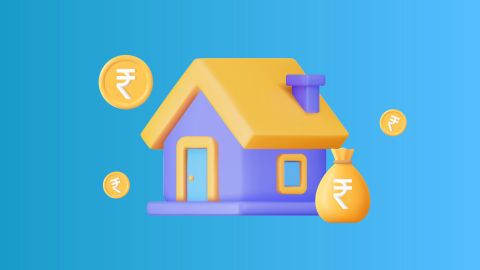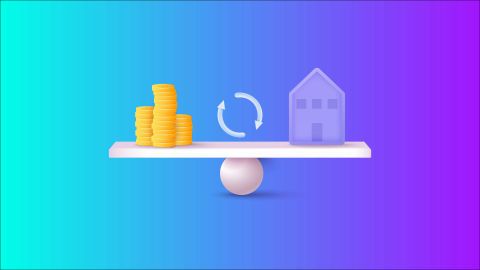The tax structure in India undergoes periodic changes and being well informed can help you optimise your tax liability. Read on to understand the income tax slabs, deductions, and exemptions applicable to those with an annual income of Rs. 12 lakh, exploring both the new and old tax regimes.
Annual Income |
Income Tax Rate |
Up to Rs. 2.5 lakh |
Nil |
Rs. 2.5 lakh – Rs. 4 lakh |
Nil |
Rs. 4 lakh – Rs. 5 lakh |
5% |
Rs. 5 lakh – Rs. 8 lakh |
5% |
Rs. 8 lakh – Rs. 10 lakh |
10% |
Rs. 10 lakh – Rs. 12 lakh |
10% |
Rs. 12 lakh – Rs. 16 lakh |
15% |
Rs. 16 lakh - Rs. 20 lakh |
20% |
Rs. 20 lakh - Rs. 24 lakh |
25% |
More than Rs. 24 lakh |
30% |
Comparison of Old Vs. New Income Tax Slabs as per Union Budget 2025
The Union Budget 2025 has introduced major tax relief for individuals, with a rebate ensuring zero tax liability for income up to ₹12 lakh under the new tax regime. This revision significantly reduces the tax burden for middle-class taxpayers.
Income Tax Slabs: Old vs. New Regime (2025)
Income Slab (₹) |
Old Regime Tax Rate |
New Regime Tax Rate (2025) |
Up to ₹2.5 lakh |
Nil |
Nil |
₹2.5 lakh – ₹4 lakh |
5% |
Nil |
₹4 lakh – ₹8 lakh |
5% |
5% |
₹8 lakh – ₹12 lakh |
20% |
10% |
₹12 lakh – ₹16 lakh |
30% |
15% |
₹16 lakh – ₹20 lakh |
30% |
20% |
₹20 lakh – ₹24 lakh |
30% |
25% |
Above ₹24 lakh |
30% |
30% |
Key Changes in Budget 2025
- Zero Tax for Income up to ₹12 Lakh: Due to a higher rebate under Section 87A, taxpayers earning up to ₹12 lakh will not pay any income tax.
- Lower Tax Rates for Higher Incomes: Reduced tax rates for incomes between ₹12 lakh and ₹24 lakh.
- No Changes in the Old Regime: Taxpayers can still opt for the old regime if they prefer deductions like 80C, HRA, etc.
Income Tax Slabs for FY 2023-24 (Old Tax Regime)
Income Range (₹) |
Tax Rate |
Up to ₹2.5 lakh |
Nil |
₹2,50,001 - ₹5,00,000 |
5% |
₹5,00,001 - ₹10,00,000 |
20% |
₹10,00,001 and above |
30% |
For individuals earning ₹12 lakh or more, the old tax regime may still be beneficial due to higher deduction options.
Deductions and Exemptions Under the New Tax Regime
Unlike the old regime, the new tax regime has limited deductions. Below are the key tax-saving options available under the new tax regime:
- Standard Deduction: A flat deduction of ₹50,000 for salaried and pensioned individuals under Standard deduction.
- Deductions under Section 80CCD (2): Employer’s contribution to National Pension Scheme (NPS) can be claimed under Section 80CCD (2).
- No Exemptions for Allowances: Perks like House Rent Allowance (HRA), Leave Travel Allowance (LTA), and deductions under Section 80C (like PF contributions, life insurance, etc.) are not available.
- No exemptions for transport and medical allowances: Unlike the old regime, these deductions are removed.
Minimum Deductions Required If Income Exceeds ₹12 Lakh
For taxpayers with an income above ₹12 lakh, maximizing deductions is crucial. Here are some key deduction options under the old tax regime:
- Section 80C Deductions: Investments in EPF, PPF, ELSS, NSC, Life Insurance Premiums, etc.
- Home Loan Interest (Section 24(b)): Deduction on home loan interest paid.
- Health Insurance Premiums (Section 80D): Tax benefit on health insurance for self, spouse, children, and parents.
- National Pension Scheme (Section 80CCD): Additional deduction for individual contributions.
- Education Loan Interest (Section 80E): Deduction for education loan interest.
- Standard Deduction: ₹50,000 deduction for salaried individuals.
Comparison of Tax Liability: Old vs. New Regime
Description |
Amount (₹) |
Old Regime (₹) |
New Regime (₹) |
Income |
12,50,000 |
12,50,000 |
12,50,000 |
Standard Deduction |
50,000 |
50,000 |
50,000 |
Professional Tax |
2,400 |
2,400 |
– |
Gross Total Income |
11,97,600 |
11,97,600 |
12,00,000 |
Less: Deduction u/s 80C |
1,50,000 |
1,50,000 |
– |
Total Taxable Income |
10,47,600 |
10,47,600 |
12,00,000 |
Income Tax Payable |
– |
1,26,780 |
90,000 |
Education Cess (4%) |
– |
5,071 |
3,600 |
Total Tax |
– |
1,31,851 |
93,600 |
Which Tax Regime is Better?
- If you have significant deductions and exemptions, the old tax regime could be more beneficial.
- If you do not claim many deductions, the new tax regime provides a lower tax rate and simpler filing.
How to Calculate Income Tax on Different Salary Slabs
For better understanding, taxpayers can calculate tax liability based on different salary slabs:
- ₹7 lakh: Tax calculation for ₹7 lakh salary
- ₹12 lakh: Tax calculation for ₹12 lakh salary
- ₹15 lakh: Tax calculation for ₹15 lakh salary
It is essential to assess individual tax-saving options before choosing between the old vs. new tax regime. Make an informed decision based on your financial goals and tax-saving potential.
Know how to calculate income tax on different salary slabs
Salary amount |
Calculate income tax for different salary slab: |
Rs. 7 lakh |
|
Rs. 15 lakh |




